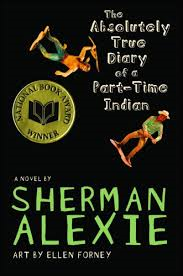 I’m not a book snob. I like a good ‘chick lit’ book as well as the next gal. I know Beth Harbison is a much-loved, best-selling author of women’s fiction…but Always Something There to Remind Me will have the distinction of being both my first and last book by Ms. Harbison. Blech.
I’m not a book snob. I like a good ‘chick lit’ book as well as the next gal. I know Beth Harbison is a much-loved, best-selling author of women’s fiction…but Always Something There to Remind Me will have the distinction of being both my first and last book by Ms. Harbison. Blech.
Erin Edwards is a beautiful, successful party planner in Washington D.C., where she lives with her precocious sixteen-year-old daughter, Camilla. She and Camilla’s father are no longer together…not that we know much about their relationship (and not that it matters anyway). Always Something There to Remind Me is Erin’s story to tell and we get the then (in third person) and now (in first person).
Then happened twenty years ago. Sixteen-year-old Erin has her heart set on eighteen-year-old Nate Lawson.
From the first time she’d seen him, his image had been emblazoned on her mind, and when he stepped into view it was as if her mind closed over it like a trap. She didn’t want to think about him, but she couldn’t stop.
His eyes met hers and something clicked.
Ahh. Young love.
Erin and Nate’s teenage romance has all the requisite twists and turns: silly fights, jealousy, sneaking around in the dead of night to have sex on basement floors. But even though Erin really, really, really loves Nate, she still can’t help doing childish things and eventually he dumps her, breaking her heart and leaving her to wallow (however secretly) for the next twenty years.
Fast forward twenty-odd years and she is in a relationship with smart and perfect and handsome Rick who has just asked her to marry him. Erin’s hesitating though because she can’t stop thinking about Nate…even though she hasn’t seen him in forever.
Until the day she’s visiting her mother in the old neighbourhood and she decides to take a walk which invariably leads her past Nate’s parents’ house and – as luck (or fate) would have it – there’s Nate.
I just watched the shock in his eyes as he took me in, and knew mine probably looked the same. Shocked, glad, scared…it was hard to read both what I saw and what I felt.
But I couldn’t look away. And when I saw him try, I realized he couldn’t either. He glanced down, a muscle in his jaw tensed, but then he looked back at me, still unspeaking.
People – you can see where this story is going from like a mile away and that would all be fine except that WHO CARES? Seriously. Erin is annoying as a teen and not even remotely self-aware as an adult. Her daughter, Cam, sounds like a therapist and the treacley ending made my teeth ache.
I bought this book because it sounded like it might have something significant to say about regret and love, but if you want a book that looks backwards at what you’ve left behind, read Losing the Moon instead.









